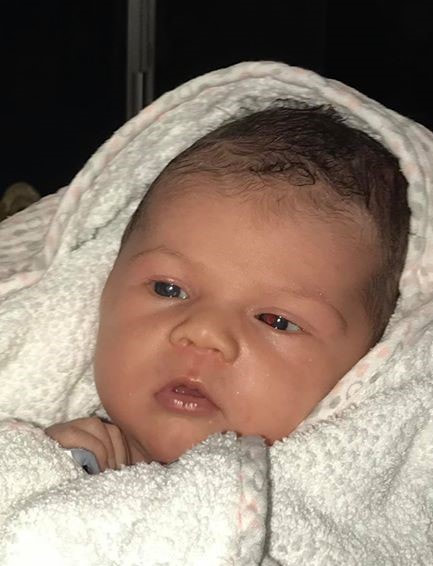Cataract |
What is a cataract?
Any cloudiness or opacity of the lens of the eye. Most commonly, cataracts affect older adults, but they can also be there at birth or develop during childhood. Cataracts vary in size and in how much they affect the child's vision. The American Association for Pediatric Ophthalmology has a useful description. They can affect one or both eyes. How common are cataracts in children in Australia? Estimates vary; one large study based in Victoria and Tasmania reported an incidence of 2.2 cases per 10,000 births (Wirth MG, Russell-Eggitt IM, Craig JE, Elder JE, Mackey DA. Aetiology of congenital and paediatric cataract in an Australian population. Br J Ophthalmol 2002; 86: 782–786). What causes cataracts in children? The cause of most cataracts in children is unknown. Some cases are the result of a genetic abnormality that may have been inherited or appear first in the affected child. Other causes include a traumatic injury, infection during pregnancy, certain drugs, and other syndromes. But most children with cataracts are otherwise healthy. What are the treatments? Because cataracts can affect a baby or child's visual development, specialist doctors will consider the size and location of the cataract in working out the best treatment. Treatment options include:
Are you concerned about your child's eyes or vision? Visit our Diagnosis page. The resource 'A Glint or A Squint' has more information about early signs of eye problems. |
Lensectomy (surgery to remove the lens affected by cataract) |
What is lensectomy?
An ophthalmologist (eye surgeon) removes the affected lens(es) under general anaesthetic in hospital. This operation is usually a 'day procedure' but may require an overnight stay. When is the best time to have this surgery? The best timing for cataract surgery depends on factors including how old the child is. Because of the rapid development of the brain in infancy, cataracts affecting vision in young babies should be removed promptly to get the best outcomes. There is some debate around the optimal timing; your paediatric ophthalmologist (eye surgeon) will be able to advise you. What to expect immediately after cataract surgery? When your baby or child wakes up after surgery they will have a dressing covering the affected eye/s. Usually this consists of a piece of paraffin gauze, a cotton eye pad and a plastic eye shield. The dressing and shield helps prevent your child from rubbing his or her eye, and to protect the affected eye/s from the risk of infection. Seeing your baby or child when they are waking up from the anaesthetic can be confronting. It’s important to remember how much comfort you are giving them by being there. As well as the eye shields, they will have a cannula (a very thin, flexible tube) in their arm or hand. They might be unusually sleepy or irritable. Some are very hungry and drink and eat straight away, others don’t want to drink or eat, and might feel sick or vomit. The cannula will be removed before your baby or child is sent home from hospital. You’ll also receive some information to take home with you about what to expect and what to look out for as your child recovers. What to expect in the days after cataract surgery?
For more information about surgery please consult your paediatric ophthalmologist. |
After surgery -
|
After the operation to remove the cataract/s, your child will need some type of refractive correction in place of the lens that was removed. Because the child's refraction will change a lot as they grow and develop, in Australia contact lenses are the most common choice for this refractive correction. The health professional will change the power and fit of the lens as the child grows. Either hard (RGP) or soft lenses may be used.
Glasses are another, less common, option for refractive correction, with a range of specialised children's frames available. Again, the power and fit will be changed as your child grows. Depending on your location, the contact lenses or glasses may be organised through the hospital, or involve separate visits to an optometrist. Alternatively, after the lensectomy an intraocular lens (IOL) (artificial) lens may be implanted (see below and more information (external site)). In this case, glasses might still need to be worn. |
In the longer term... |
|
Intra-ocular lenses (IOLs) |
It is hard to predict how the child's eye will grow after IOL placement. The child will probably need glasses to read, and maybe for distance vision as well. The glasses prescription may change as time passes. The IOL will usually remain in the eye for the child's whole life. However they may need further surgery to clear any scarring that develops around the IOL that gets in the way of vision.
Inserting an IOL after the age of 1-2 years does not usually mean a higher risk of glaucoma compared to contact lenses. Straight after IOL surgery: Your doctor will usually advise your child to avoid sports including swimming and any other activities which may get dirt in their eyes for 2 to 4 weeks after the surgery. In the longer term: Generally, there are not any long-term restrictions on activities. Doctors may recommend that the child uses protective eyewear when playing contact sports. |
Other high-quality information
- Royal Children's Hospital Ophthalmology department - patient information
- What to do if you see a white pupil in a photograph (RCH leaflet)
- A Glint or a Squint should Make You Think
- Renwick Centre podcast: Interview about childhood cataract with Megan Prictor
- Renwick Centre podcast: interview about patching therapy with Sandra Staffieri
- American Association for Pediatric Ophthalmology and Strabismus - patient information
- Pediatric Glaucoma and Cataract Family Association (North America)
We consider these to be sites that may help families of children with cataracts, but are not responsible for their accuracy. Please see our disclaimer.
